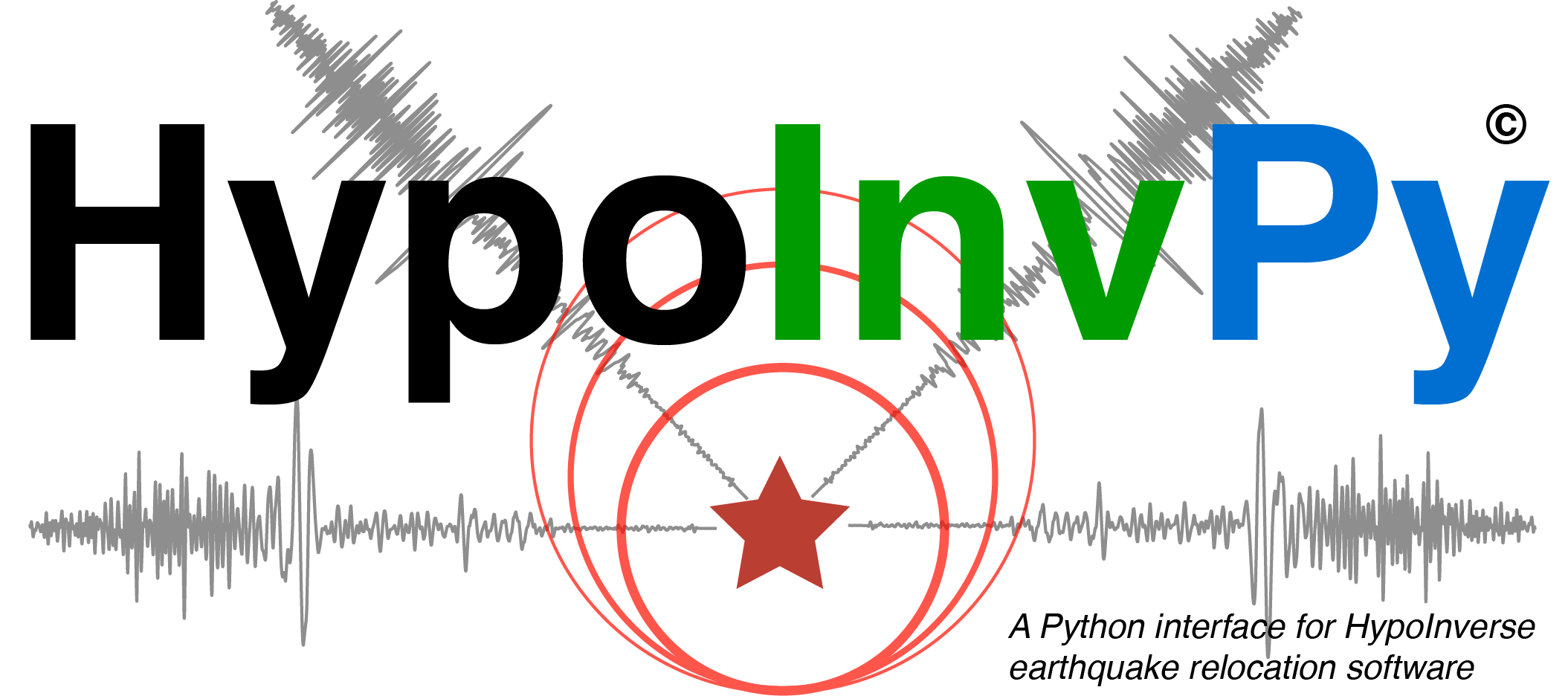A Python interface for HypoInverse earthquake relocation software
This package is not intended to show documentation of how to use hypoinverse. Instead, we focus on buiding an user-friendly Python interface to run hypoinverse. For detailed documentation of hypoinverse, please read the documentation for hypoinverse in hyp1.40/doc/hyp1.40.pdf. The documentation for this interface package is in doc/HypoInvPy_manual.pdf.
The codes and workflow in this package are modified and simplified from Hypo-Interface-Py (https://github.com/YijianZhou/Hypo-Interface-Py). The hypoinverse version is 1.4 and can be downloaded from USGS (https://www.usgs.gov/software/hypoinverse-earthquake-location).
HypoInvPy is available on pypl as a standalone package. It could be installed as regular pip package: pip install hypoinvpy. The latest version is always available on GitHub.
This installation method will get the latest version from GitHub.
- Create and activate a Python virtual environment
hypoinv. This is optional but recommended. This will help isolate the computational needs from other packages. This will also help avoid version incompatibility in case new packages for some codes are updated in thebaseconda environment. However, sinceHypoInvPydoesn't currently need complicated packages, running under thebaseenvironment may just work fine.
$ conda create -n hypoinv -c conda-forge jupyter numpy scipy pandas python cartopy obspy mpi4py
Then, activate the environment with: $ conda activate hypoinv
- Clone the github repository, in terminal under the desired directory:
$ git clone https://github.com/xtyangpsp/HypoInvPy.git
cdto the repository folder in terminal and install the package with the parameters insetup.py.
$ pip install .
- Create jupyter notebook kernel with the environment (after activating the environment).
$ pip install --user ipykernel
$ python -m ipykernel install --user --name=hypoinv
- Make sure hypo1.40 has been installed on your computer. Download the version from the USGS website (https://www.usgs.gov/software/hypoinverse-earthquake-location). For your convinience, a copy of the hyp1.40 codes is available under folder
hyp1.40. - In terminal under the
exampledirectory, run the jupyter notebookHypoInvPy_run_example.ipynb - The output directory includes the resultant earthquake catalogs.
- Add visualization functionalities, e.g., earthquake locations and depth distribution and temporal sequence, etc.
